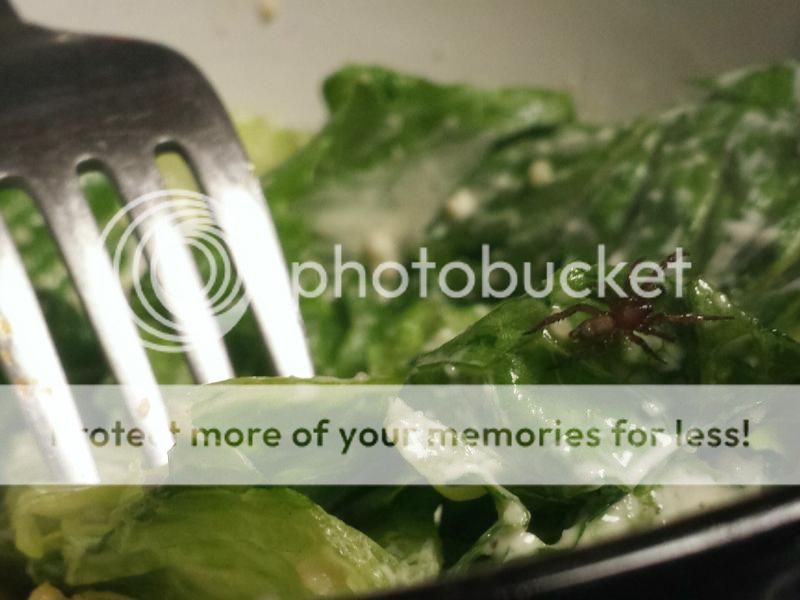Fine with me - as long as they are in a pen and not running around my houseI actually have seen these as a pet. They move out FAST if they get out onto the floor.
Im glad someone has a sense of humor lol
Fine with me - as long as they are in a pen and not running around my houseI actually have seen these as a pet. They move out FAST if they get out onto the floor.



A very small sample of pic's of my collection....

Care to share details? I'm really curious. It's not too often I find someone as passionate about keeping tarantulas as I am. I've been keeping them for about 14 years. How about you?
Care to share details? I'm really curious. It's not too often I find someone as passionate about keeping tarantulas as I am. I've been keeping them for about 14 years. How about you?
Here's my collection (at least, I think that's all of them)
0.0.2 Acanthoscurria geniculata (Brazilian whiteknee)
0.1.0 Aphonopelma anax (Texas tan)
0.0.1 Aphonopelma burica (Costa Rican bluefront)
2.2.0 Aphonopelma chalcodes(desert blond)
0.1.0 Aphonopelma hentzi (Oklahoma brown)
0.2.0 Aphonopelma mojave (Mojave Desert dwarf)
0.1.0 Aphonopelma sp. ("New River" rustrump)
0.0.1 Avicularia diversipes (Amazon sapphire pinktoe)
0.0.6 Avicularia versicolor (Antilles pinktoe)
0.1.1 Brachypelma albopilosum (curlyhair)
0.0.3 Brachypelma emilia (Mexican redleg)
0.0.4 Brachypelma smithi (Mexican redknee)
0.1.0 Brachypelma vagans (Mexican redrump)
0.1.0 Brachypelma vagans FL (Mexican redrump)
0.0.1 Ceratogyrus darlingi (rear horned baboon)
0.0.1 Chromatopelma cyaneopubescens (greenbottle blue)
1.1.0 Eupalaestrus campestratus (pink zebra beauty)
0.0.1 Euathlus sp. "Yellow" (Chilean dwarf yellow)
2.1.0 Grammostola porteri (Chilean rose)
0.0.4 Grammostola pulchra (Brazilian black)
0.0.2 Grammostola pulchripes (Chaco goldenknee)
0.1.0 Grammostola rosea (Chilean rose – RCF)
1.2.40? Holothele incei (Trinidad olive) - Communal tank, conservative estimate of # of juveniles
1.1.1 Lasiodora parahybana (Brazilian salmon)
0.1.0 Poecilotheria fasciata (Sri Lankan ornamental)
1.1.0 Poecilotheria regalis (Indian ornamental)
0.0.1 Poecilotheria subfusca "Highland" (Ivory ornamental)
0.1.0 Psalmopoeus cambridgei (Trinidad chevron)
0.0.3 Pterinochilus murinus (Usambara baboon)
Numbers indicate (# males, # females, # unsexed juveniles)
 Kidding. Very impressive.
Kidding. Very impressive.
I separated out the eggsac contents into 6 different containers (delicups with coffee filters in them). Once the good eggs molted into 1st instar spiderlings (3rd stage of development), they are a bit more mobile and can crawl around. So they kind of stick to the coffee filter, and it was mostly just a matter of pouring off the dud eggs, since they would just roll out. They are still working off the energy they got from the egg, and do not need to eat until they molt one more time. After that time, they will need to be separated out into individual enclosures, or they could begin to eat each other.I have one question, KJ, how do you sort out the duds from the good spiders in an egg sac?
You can do that, and some people do. But once you pull the eggsac from mommy, I want to open it up, and ensure some of the eggs are developing. I pulled an eggsac from one tarantula and all of the eggs were duds, all dried up inside. Also, if some are duds, they could start to mold, and if that happens it can spread and kill off any good ones, so you want to separate them before that happens.Also, why couldn't you put the whole sac in a box and let it happen naturally?
This brings up other questions... probably better suited to an advanced biology class.They are still working off the energy they got from the egg
You can do that, and some people do. But once you pull the eggsac from mommy, I want to open it up, and ensure some of the eggs are developing. I pulled an eggsac from one tarantula and all of the eggs were duds, all dried up inside. Also, if some are duds, they could start to mold, and if that happens it can spread and kill off any good ones, so you want to separate them before that happens.
Hit me! Been studying these amazing creatures for 15 years.This brings up other questions... probably better suited to an advanced biology class.
Yeah, in the wild, Mommy digs a burrow, and goes to the right depth to provide the optimal temperature and humidity levels for the eggsac to develop. In captivity, everything is artificial and conditions are replicated as much as we can, but not always optimal. There's lots of room for error.I guess in nature, mommy is tending to the sac, so the chances of mold/infection/etc happening is diminished?
Hit me! Been studying these amazing creatures for 15 years.